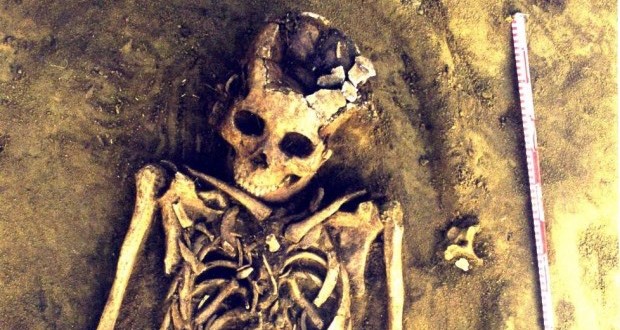The exhumed skeleton of a mother who likely died in childbirth 7,700 years ago hid a remarkable secret until a University of Saskatchewan researcher took a closer look.
Bio-archeologist Angela Lieverse says she discovered the bones of twins nestled between their Siberian mother’s pelvis and upper leg.
She said the bones tell the sad story of a woman who partially delivered one twin in a breech position, which obstructed the birth of the second child.
“It’s virtually impossible to say for sure there were twins in the past,” said Lieverse, who added that while archeologists have found babies buried together in the same grave, it doesn’t necessarily prove the existence of twins.
Researchers assume twins have always existed — one to three per cent of modern births are pairs — but there has only been circumstantial evidence of them in ancient times, she said.
“They’re just invisible archeologically.”
But finding the twins’ bones inside the mother confirms them as the oldest set in the world, Lieverse said.
The mother, who was between 20 and 25 years old, probably bled to death or died from exhaustion. The twins probably suffocated.
“It’s one of the oldest, if not the oldest case, where we have a mother dying during childbirth.”
Angela Lieverse, who works at the University of Saskatchewan, said the woman’s hunter-gatherer Neolithic community lived on the shore of Lake Baikal in Russia.
“The fact that the first baby came breech was just a death sentence for all three of them.”
Prior to this find, the oldest set of confirmed twins was discovered in South Dakota, Lieverse said. The bones dated back about 400 years.
The project has personally resonated with Lieverse.
“It makes me really, really sad … it’s hard, especially infants and children, to look at their skeletons … and not get choked up,” she said. “There was probably nothing they could do for her.”
Angela Lieverse made the discovery in the summer of 2012, but her research was published this month in the journal Antiquity. She worked with Andrzej Weber from the University of Alberta and Vladimir Bazaliiskii in Russia.
Agencies/Canadajournal
 Canada Journal – News of the World Articles and videos to bring you the biggest Canadian news stories from across the country every day
Canada Journal – News of the World Articles and videos to bring you the biggest Canadian news stories from across the country every day



